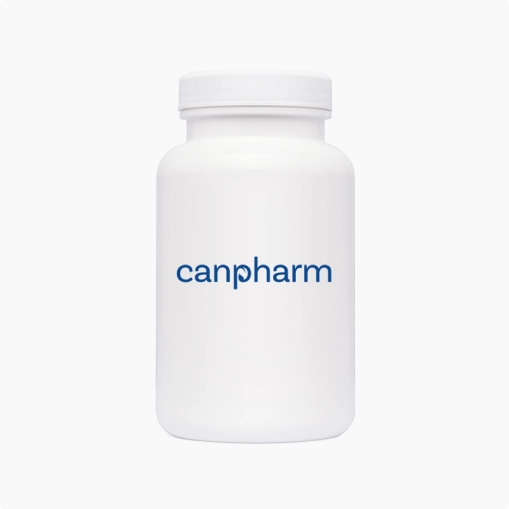
Sitavig (Acyclovir)
| Dose | Size & Price | Qty |
|---|
-
Description
-
Reviews (0)
-
Related Products
-
Related Conditions
Fact Table
| Fact Table | |
|---|---|
| Formula | C8H11N5O3 |
| License | FDA approved |
| Bioavailability | 15-30% orally; significantly higher when applied topically |
| Legal status | Prescription only (Rx) |
| Chemical Name | Acyclovir |
| Elimination half-life | 2.5 to 3.3 hours in individuals with normal renal function |
| Dosage (Strength) | Buccal tablets: 50 mg |
| Pregnancy advice | Category B (No evidence of risk in humans) |
| Brands | Sitavig, Zovirax |
| Protein binding | 9 to 33% |
| PubChem CID | 135398742 |
| MedlinePlus | a681045 |
| ChEBI | 2453 |
| ATC code | J05AB01 |
| DrugBank | DB00787 |
| KEGG | D00222 |
| Routes of administration | Oral, topical, intravenous (IV) |
Sitavig is an antiviral medication used for treatment of cold sores caused by the herpes simplex virus and is available by prescription. The active ingredient in the medication works to eventually eliminate the virus and makes outbreaks shorter and less severe. It also aids in making the sores heal faster along with preventing new cold sores from developing and minimizing any pain or itching. Sitavig may also be prescribed to treat genital herpes. Buy Sitavig from Canada and Canada and get the lowest on the medication.
What is a Herpes Simplex Infection?
The herpes simplex virus is a common infection that is spread by skin-to-skin contact and cause painful blisters or ulcers. Type one is the HSV-1 virus that is spread by oral contact and will cause infections around the mouth, including cold sores. HSV-2 is spready by sexual contact and causes genital herpes. It is not uncommon for people to have no symptoms or only very mild symptoms from an infection, but it is also possible to have recurrent herpes infection with either type.
Directions
Remove one tablet from the blister pack and place it in mouth. Locate it on the upper gum just above the left or right incisor tooth. Push firmly into place, and after placement remove hand from mouth and gently press your finger on the outside your upper lip for 30 seconds to make tablet stick to gums. Leave in place and allow table to dissolve naturally.
If tablet becomes detached anytime over the first 6 hours after original placement, repeat these steps. You can drink liquids but do not brush your teeth during this time.
Ingredients
The active ingredient in Sitavig is Acyclovir.
Cautions
Let your doctor know of any history of gum disease or other mouth health ailments before starting on Sitavig 50mg
It may be necessary to postpone vaccinations and immunizations while you are using the Sitavig Buccal tablet to get rid of a cold sore
Do not crush, chew, suck, or swallow the tablets
Medication will work best when applied at the very firs sign of a cold sore developing
Interactions
Negative drug interactions may occur between Sitavig and other Rx medications, including Aczone, fluticasone, salmeterol, amphetamine, trifarotene topical, alpha-lipoic acid, brimonidine ophthalmic, retapamulin topical, tretinoin topical, amiloride, ammonium lactate topical, minocycline topical, anastrozole, aprepitant, leflunomide, aripiprazole, sulfasalazine, diphenhydramine, finasteride, metformin.
Let your doctor know of all medications you are currently taking before getting a prescription and proceeding to buy Sitavig online.
Side Effects
Sitavig side effects may occur, and some users may experience pain at the application site or a headache. If side effects are experienced you may want to stop use and meet with a doctor again to discuss cold sore treatment alternatives.
Frequently Asked Questions about Sitavig
Why is Sitavig so expensive?
Prescription medications that require development for more unique application methods will be more expensive than standard tablet medication because of the development that is required for them.
How long does Sitavig take to dissolve?
Your Sitavig 50mg tablet should fully dissolve within 5 to 6 hours.
How much Acyclovir to take for a cold sore?
The 50mg tablet is usually all that is required to eliminate cold sores for most people, but in the event that dosage is insufficient for you then your doctor will prescribe a higher one.
Can you take Acyclovir while pregnant?
Pregnant women should only use the Sitavig tablet if their doctor approves it.
Can Acyclovir treat bacterial infection?
No, Acyclovir is an antiviral medication and will only be used to treat viral infections. An antibiotic medication will be needed for treating bacterial infections.
